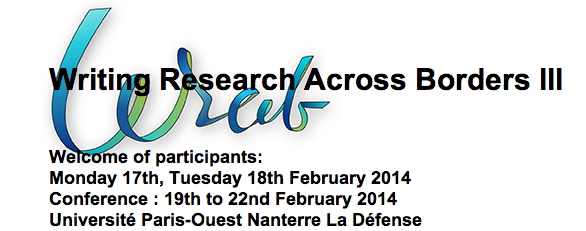Review of McKee, H. A., & DeVoss, D. N. (Eds.). (2013). Digital writing assessment & evaluation. Logan, UT: Computers and Composition Digital Press/Utah State University Press. Retrieved from http://ccdigitalpress.org/dwae.
ISBN: 978-0-87421-949-4
By Leslie Valley, Eastern Kentucky University
Heidi McKee and Danielle DeVoss’s 2013 digital book, Digital Writing Assessment and Evaluation (DWAE), offers theoretical and practical approaches to understanding the assessment challenges posed by digital writing. An edited collection, DWAE features a foreword by Andrea Lunsford, a preface by the editors, fourteen chapters by thirty-eight authors, and an afterword by Edward White. While the book focuses primarily on digital writing assessment in post-secondary composition education, the attention to ethics, class structure, multimodal texts, and programmatic concerns highlight key discussions in digital writing that are helpful for K-12 teachers and Writing Across the Curriculum administrators as well.
McKee and DeVoss have organized the chapters of DWAE in a practical way, first addressing the issues of fairness and privacy before moving on to discussions of classroom and programmatic implementation. In the first section, “Equity and Assessment,” Mya Poe and Angela Crow assert the importance of ethical decision-making when gathering and storing data and implementing change based on that data. Having established ethical considerations as the foundation, DWAE then delves into the more specific concerns of grading rubrics, student engagement and responsibility, e-portfolios, and program assessment.
Those looking to understand the connection between digital writing and course learning outcomes also have much to gain from DWAE. In the second and third sections, “Classroom Evaluation and Assessment” and “Multimodal Evaluation and Assessment,” the authors provide specific examples of assignments, students’ digital texts, and approaches to assessment. While they offer different frameworks for assessment, each author emphasizes the connection between assessment and assignment design, the importance of language and early discussions with students, and the necessity of contextualizing assessment. In Chapter 4, for example, Colleen Reilly and Anthony Atkins demonstrate that assessment language can be designed in such a way that it is not only understandable to students but also stimulates their motivation and engagement in the production of digital compositions. Reilly and Atkins point to a primary trait scoring approach rather than a holistic approach as a way to account for both process and product in the classroom.
In addition to classroom and assignment-specific frameworks, DWAE also offers methodologies for program assessment. In the final section, “Program Revisioning and Program Assessment,” the four chapters discuss pedagogical, institutional, and financial motivations for revising program assessment. Again, authors make the connection between assessment and pedagogy, demonstrating the benefits of digital platforms for immediate programmatic feedback on assignments, instruction, and grading rubrics that prompt immediate programmatic revision. They explore the potential of these digital platforms for rethinking program design and professional development for instructors. Specifically, Beth Brunk-Chavez and Judith Fourzan-Rice illustrate their experience with MinerWriter, a digital distribution system that has allowed University of Texas at El Paso to standardize assessment. This approach, they contend, has allowed them to bridge the disconnect between assessment and instruction by identifying students’ struggles and responding with assignment revision and professional development at the programmatic level.
McKee, DeVoss, and the authors take advantage of the digital format, linking to additional information and resources, embedding videos and screenshots, and creating non-linear chapters (see, specifically, Chapter 6 by Susan Delagrange, Ben McCorkle, and Catherine Braun). These digital affordances allow DWAE to demonstrate the full rhetorical context in which these assessment models exist, providing readers with a fuller understanding of the connections between assessment, pedagogy, and digital technologies. The advantages of the digital format are especially evident in Meredith Zoeteway, Michelle Simmons, and Jeffrey Grabill’s chapter on assessment design and civic engagement. By including hyperlinks, screenshots, videos, and diagrams, they provide a complete overview of the values, goals, materials, assignments, discussions, and assessments included in a digital writing course focused on civic engagement.
In their preface, McKee and DeVoss acknowledge what DWAE does not address: digital writing and students with disabilities and Automatic Essay Scoring (AES) (although Edward White’s afterword does foreground the need for more research on AES). Despite these absences, DWAE is a comprehensive look at digital writing assessment in a variety of contexts. Rather than offering one overarching theory of assessment, the text establishes the importance of assessment in context. The variety of contexts and proposed methodologies prompt both teachers and WPAs to consider digital writing assessment in light of their own ideological and pedagogical values and institutional settings.
Source: jwa


